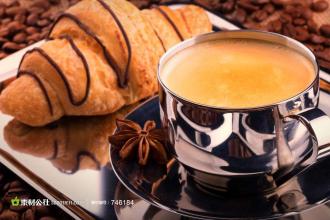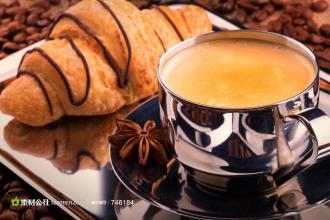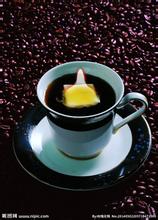Flavor and taste characteristics of Panamanian coffee manor with rich dry aroma introduction to fine coffee
Panama City, originally an Indian fishing village, is now divided into three parts: the ancient city, the old city and the new city. With a population of 830000, Panama City is a famous city with a long history.
In 1513, the navigator Baboya landed on the Central American continent from the Atlantic Ocean. When he was looking at the terrain on a mountain, he suddenly saw the Pacific Ocean in his glasses. Realizing the geographical significance of this place, he came to the Pacific Ocean at the same time, chose a fishing village as a foothold, built some houses one after another, and followed the name of the local Indians. Call this place "Panama", meaning "fishing village", which is the predecessor of Panama City.
In 1519, the Spanish dynasty sent Davila here as governor. When he took office, he built construction and expanded the fishing village into a town. Palaces, prisons, parks, shops and hospitals appeared one after another, and Panama City was officially born. In the years that followed, Panama City became a base for Spanish colonists to enslave American Indians and a center for religious activities, as well as a distribution center for Spanish colonists to search for wealth and trade in slaves in the Americas. Spanish colonists concentrated a large amount of gold, silver and jewelry looted from all directions in the city and then transferred it to Spain. The great wealth of Panama City naturally aroused the covet of the pirates.
In 1671, the British pirate Morgan invaded Panama City by force. After ransacking, he set fire to the city and burned it to rubble.
In 1673, Panama City was rebuilt about 8 kilometers west of the abandoned site of the ancient city.
It was designated as the capital of the Republic of Panama in 1903. Today, Panama City has expanded to an area of more than 100 square kilometers and is the political, economic and cultural center of Panama. [2]
City profile editor
Panama means "the land of butterflies" in Indian. After Columbus landed off the coast of Panama in the early 16th century, he found flocks of colorful butterflies flying everywhere. So, using the local language, the place was named "Panama".
On the whole, Panama City can be divided into two parts: the old district and the new district.
Coffee is grown from 1670 to 1850 meters above sea level, making it one of the two highest coffee farms in Panama (the other estate with these elevations should be Carmen in the Vulcan Valley).
At such a high altitude, the low temperature delayed the ripening of the coffee berries, about a month later than the normal ripening period, while the fertile volcanic soil provided sufficient nutrients for the coffee, coupled with the excellent microclimate brought by the Baru volcano, Elida Manor was able to achieve good results in cup test competitions.
In addition to creating good coffee cultivation conditions, the Lamastus family, which runs the Elida estate, has also planted many different native tree species on the estate, not only to shade the coffee trees, but also to provide a friendly habitat for birds. In terms of fertilization, the Lamastus family uses artificial fertilization and a small amount of chemical fertilizers, but never uses pesticides and herbicides that are harmful to the environment.
At present, in addition to Catuai, Typica and Bourbon, the Lamastus family also began to plant Geisha varieties a few years ago. In spite of this, Elida Manor used Catuai in all the batches of the Best of Panama competition, but achieved good results again and again, which shows the excellent quality and special flavor of coffee brought by its geographical environment and excellent postharvest treatment technology.
This batch of raw beans are treated in the sun, which is rare in Central America-dark red purple berries with peak maturity are artificially harvested and directly exposed to the sun for more than two weeks. The sugar in the berry pulp and the fermentation products of the microorganisms in the sun process are all concentrated and infiltrated into the coffee beans, giving this rare high-altitude Panamanian coffee a rich dry aroma of strawberries, cream and toast. and after the entrance of the coffee into a rich berry and tropical fruit mixed with vanilla, and peppermint cool grass, complex aroma, fruit elegant and charming Moderate sweet and sour, pleasant taste, is a rare delicious combination

Important Notice :
前街咖啡 FrontStreet Coffee has moved to new addredd:
FrontStreet Coffee Address: 315,Donghua East Road,GuangZhou
Tel:020 38364473
- Prev

Fragrant, bitter and mellow Indonesian Manning Coffee Flavor and Taste introduction of Fine Coffee in Manor production area
A number of scattered feudal kingdoms were established in the 7th century AD. Recorded dynasties include the death of the Buddhist Sri Buddha (mid-7th century-1293), who was conquered by Manabache, and the Kingdom of New Keshari, which controlled the Strait of Malacca (1222-1292), which led to the Yuan-claw War, and then the royal family established the most powerful Malacca in Indonesian history in Java with the help of the Yuan army.
- Next

Jamaica Blue Mountain Coffee Flavor Taste Estate Features Coffee Bean Introduction
The earliest Jamaica Blue Mountains refer to coffee produced by Wallenford Farm and Silver Hill Farm, with the former having the best quality; today's Jamaica Blue Mountains refer to coffee beans grown in the Blue Mountains region east of Kingston, the capital of Jamaica (more than 1000 meters high). Now the largest estate in the country, M.B.C. F is printed on its barrels, and its products are often found in Taiwan. Jamaica
Related
- Detailed explanation of Jadeite planting Land in Panamanian Jadeite Manor introduction to the grading system of Jadeite competitive bidding, Red bid, Green bid and Rose Summer
- Story of Coffee planting in Brenka region of Costa Rica Stonehenge Manor anaerobic heavy honey treatment of flavor mouth
- What's on the barrel of Blue Mountain Coffee beans?
- Can American coffee also pull flowers? How to use hot American style to pull out a good-looking pattern?
- Can you make a cold extract with coffee beans? What is the right proportion for cold-extracted coffee formula?
- Indonesian PWN Gold Mandrine Coffee Origin Features Flavor How to Chong? Mandolin coffee is American.
- A brief introduction to the flavor characteristics of Brazilian yellow bourbon coffee beans
- What is the effect of different water quality on the flavor of cold-extracted coffee? What kind of water is best for brewing coffee?
- Why do you think of Rose Summer whenever you mention Panamanian coffee?
- Introduction to the characteristics of authentic blue mountain coffee bean producing areas? What is the CIB Coffee Authority in Jamaica?

